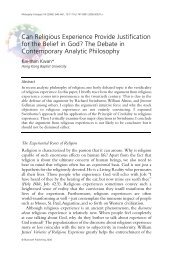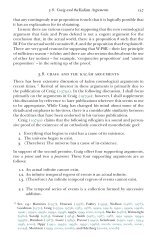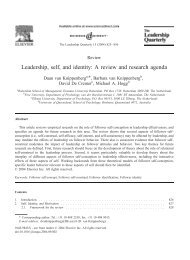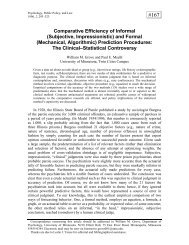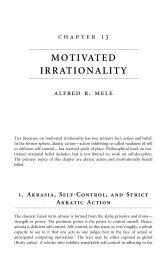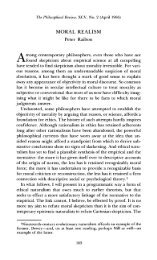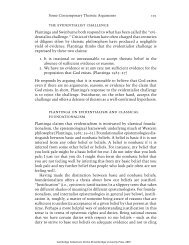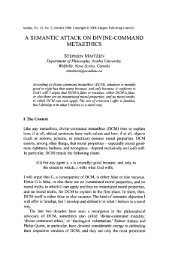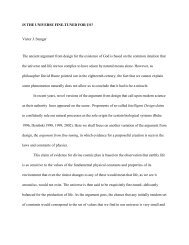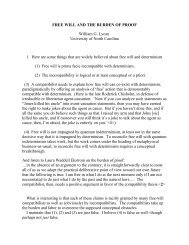Atheism and Theism JJ Haldane - Common Sense Atheism
Atheism and Theism JJ Haldane - Common Sense Atheism
Atheism and Theism JJ Haldane - Common Sense Atheism
Create successful ePaper yourself
Turn your PDF publications into a flip-book with our unique Google optimized e-Paper software.
18 J.J.C. Smart<br />
on context. I mainly think of it in terms of coherence, of fitting the<br />
explan<strong>and</strong>um proposition into our web of belief, 29 but in a scientific or<br />
cosmological context at least we should explain the more particular by the<br />
more general, the parochial by the cosmic. Whitrow’s argument does indeed<br />
establish connections between the three dimensions of space <strong>and</strong> the existence<br />
of intelligent life on earth. That space has three dimensions is shown to<br />
be a necessary but not sufficient condition of the existence of inhabitable<br />
planets <strong>and</strong> intelligent life.<br />
Is it that explanations come from the giving of necessary conditions, not of<br />
sufficient conditions? This will not do, because sometimes it is a sufficient<br />
condition that is explanatory. Decapitation is a sufficient condition for the<br />
death of Charles I <strong>and</strong> is explanatory of it. It is not a necessary condition for<br />
his death, since he might have died in his bed or by shooting. A cause is<br />
sufficient for an effect (given constancy in our contextual assumptions about<br />
background states of affairs – e.g. putting a match to a fire causes it to flame,<br />
assuming the presence of oxygen, that the wood is not wet, etc.) but is not<br />
necessary (e.g. Charles I might have been simultaneously decapitated <strong>and</strong><br />
shot through the heart).<br />
These complications make it difficult to say clearly <strong>and</strong> precisely just why<br />
Whitrow’s putative explanation of the three-dimensionality of space is back<br />
to front. I suspect that it is just a matter of the particularity of the suggested<br />
explanans <strong>and</strong> of the cosmic nature of the supposed explan<strong>and</strong>um. Let us<br />
consider an even more preposterous argument, also due to Whitrow. This is<br />
that if space had only two dimensions we could not have any alimentary<br />
canal, since we would be divided into two disconnected parts. However, is it<br />
not mad to say that space has more than two dimensions because we can eat,<br />
instead of saying that the cosmic fact that space has three dimensions is (in<br />
part) the explanation of why we can eat?<br />
Br<strong>and</strong>on Carter who first formulated the anthropic cosmological principle<br />
(in fact both a ‘weak’ <strong>and</strong> a ‘strong’ version of it) did so in connection with<br />
the hypothesis that our universe is only one of a huge variety of universes, a<br />
‘world ensemble’, in which the fundamental constants of nature, which seem<br />
so arbitrary to us, differ r<strong>and</strong>omly from universe to universe. 30 Strictly speaking,<br />
of course, ‘universe’ should refer to everything that there is (perhaps<br />
excluding God if we talk of God creating the universe) <strong>and</strong> so could be<br />
taken to refer not to what we think of as our universe but to the ensemble<br />
of universes. However, I think that it will not be confusing if I use the<br />
word ‘universe’ ambiguously <strong>and</strong> rely on context to make it clear whether<br />
I am talking of one of the many members of the world ensemble or of the<br />
whole lot.<br />
Carter’s many universes hypothesis may be held to explain the fine tuning<br />
of our universe. If there is a sufficiently large number of universes with the



